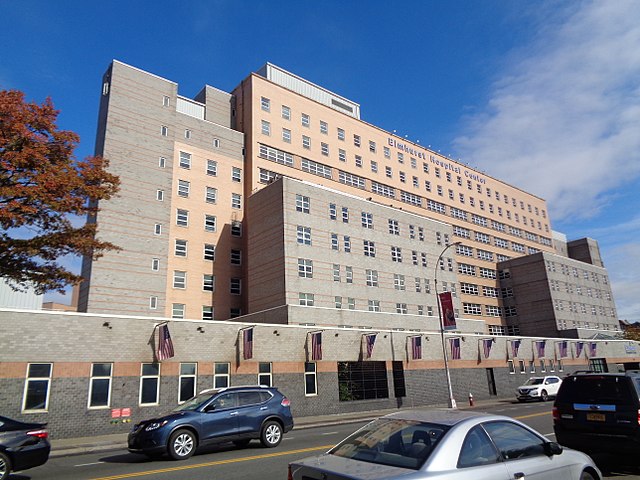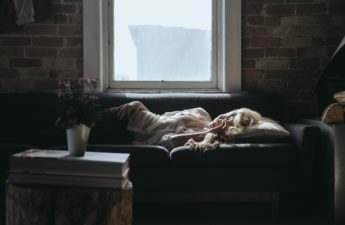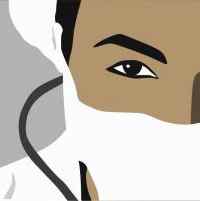Sarah Higgins, a dermatology nurse, arrived in late March and was assigned to the hard-hit Elmhurst Hospital in Queens. These are her words.

Sarah Higgins is a nurse practitioner who has worked for years at a dermatology practice in Dallas.
Because the practice performed elective procedures — skin rejuvenation, laser tattoo removal — it was suspended amid the COVID-19 crisis.
Higgins, 34, soon raised her hand to come to New York City as a reinforcement for an overwhelmed health care workforce.
She arrived in late March and was assigned to Elmhurst Hospital in Queens, one of the hardest-hit medical centers in one of the city’s hardest-hit boroughs.
On March 25, The New York Times reported that Elmhurst had seen 13 COVID-19 deaths in a single day, in what workers there called an “apocalyptic” surge of patients.
Higgins turned up for duty the next day and worked the next 11 days straight, pulling 12-hour shifts in the intake section of the hospital’s emergency department.
We asked Higgins to record some of her experiences as one of the many health care professionals who have volunteered to come work in one of the world’s COVID-19 epicenters. Her reflections have been edited for length and clarity.
Day One
My first day in the emergency department was unlike anything I had ever witnessed. It was a mix of a television show like “Grey’s Anatomy” and something out of a triage tent in a war movie.
I hadn’t worked in a hospital for six years, and I was shocked. But I think nursing instinct and adrenaline kicked in, and I just started doing anything I could. I was paired up with a nurse and I started hanging IV bags, passing out medication, drawing blood, checking oxygen levels.
My eyes must have shown my shock because a few days later, one of the physician assistants said he was glad to still see me. Based on the look in my eyes the first day, it seems, he didn’t know if I’d stay around.
The disease takes a terrible toll on the body. I don’t have a critical care background, so flu patients or other patients in respiratory distress have not been my typical patient population.
But every nurse and doctor that I work with that has worked in the ICU says they haven’t seen a virus that takes such a terrible toll on not just the respiratory system, but also the cardiac and renal systems as well.
After I had been working in the hospital for a few days and seeing how sick patients could get very quickly, I knew that many of the people I was helping assess were going to die. A patient came into the emergency department, and I did his evaluation and determined he needed to be admitted to the hospital.
He asked me where he could charge his phone, and that’s when it really hit me. He like others had left home not quite realizing that they might not see their family again. That’s why he wanted to charge his phone — a chance to talk to his family at least one more time again.
I don’t know if he survived.
Some days I get very emotional. I was on my fifth or sixth day and the overwhelming amount of patients hit me. It was a combination of the stress that everyone was feeling, the heartbreaking looks of sadness and fear on patients faces, and the conditions that patients were in while waiting for a room.
I triaged a patient, and the next morning he was still there sitting in a chair because a gurney hadn’t opened up yet. I couldn’t imagine my parents sick and sitting in a chair for 24 hours at the hospital. I know people aren’t surviving this disease and it’s heartbreaking to transfer a patient to a more critical unit and not know if they will make it. I find that I now hold a patient’s hand or put a hand on their shoulder, which is not how I typically am with patients. But patients are alone in a busy emergency department only seeing the eyes of the people who take care of them, so I feel like everyone needs a little extra acknowledgement.
The main reason I’m sure I’ve held in there as long as I have is because of the team of health care providers I’ve been with. The small group of us who were placed at Elmhurst has become tight knit, and the staff has been more than welcoming to the “outsiders.” The local fire department comes by the hospital at 7 every night and leads the neighborhood in cheers.
From Botox to the Front Lines
I chose nursing late in my senior year of high school. I heard nursing stories from my two aunts while growing up, which planted the seed. Two of my great aunts were also nurses in the early to mid 1900s, so it must be in my blood. When applying for colleges, I was initially going into general business studies, but then I was able to shadow an emergency department nurse and that’s when I decided that I would major in nursing in college. The nurse exuded confidence, knowledge, and I still remember going home and trying to find out more about diabetes after seeing a patient with diabetes while shadowing. I applied and was accepted to the University of Pittsburgh’s School of Nursing in 2003 and graduated in 2007.
A day in the life of a nurse practitioner in an aesthetic dermatology setting consists of a full day of seeing, evaluating and treating patients with treatments such as neuromodulators (Botox), laser hair removal, laser tattoo removal, lasers for skin rejuvenation and fillers. This subspecialty of dermatology is in growing demand, and a nurse practitioner may see 20 to 25 patients in eight hours. I am now in management and am a regional director for the medical group, overseeing offices in Texas, Chicago and New York.
My office closed on March 16. Facing weeks, and possibly months, without my normal work, I started to look into other areas of health care where I could be useful during my time off. A co-worker sent me information regarding an emergency relief staffing agency that was looking for people willing to work in New York City. As soon as I received the information, I called the staffing agency. Given my situation and the need that New York City had, it really wasn’t difficult to raise my hand to go.
Two days after arriving in New York, I found out that I would be at Elmhurst Hospital. I had heard about it on the news. I remember getting my assignment and thinking, “Wow, I’m going into the fire.”
I did a little further research into the hospital and found a video an emergency department physician had made. She was detailing how busy the hospital was, how they had very little personal protective gear or equipment needed to take care of patients. I wouldn’t say that I had reservations; this actually made me more ready to get into the hospital and start working. I was definitely nervous to see what I would be walking into, but the more I read about Elmhurst, the more I wanted to be doing something.
I had been in New York back last summer and fall. Now, to get off the plane and walk into an empty LaGuardia Airport felt extremely unnatural. No long lines; all shops closed. There was one other person in line with me for an Uber and the parking lot was empty. In a way, it felt like I shouldn’t be there.
Driving and walking through the city was beyond strange. There was an eerie quietness in the city. The biggest city in America was a ghost town.
I know this will change me. It hasn’t fully hit me yet. There’s a lot that I haven’t processed yet. I do plan to go back to dermatology, but I have a sense that I will be drawn to ‘front line’ work again. Once we are on the other side of this, I think I will have a better idea of my calling as a nurse going forward.
“I Do Whatever Is Needed”
I have been living at the New Yorker hotel with hundreds of other nurses and other professionals from all over the country. I wake up at 5:40, quickly get ready, throw a protein shake and energy drink in my bag, grab my plastic bag with my N95 mask and a few extra surgical masks and head down to the hotel lobby.
A charter bus fills up with staff, and we leave for Elmhurst at 6:15. The emergency department was so crowded that patients were on oxygen tanks rather than wall hookups that continuously supplied oxygen. While one of us starts checking patients, I would get a supply of oxygen tanks ready for patients. The problem with tanks is they run out of oxygen and need to be constantly changed. The hospital was so busy that we went to the basement ourselves where the oxygen tanks were stored and would make four to five trips back and forth changing out empty tanks for full ones. This took two to three hours every morning.
After that, I do whatever is needed. If needed to triage and evaluate patients, I would do that. There was also a constant stream of lab work and medications that the nurses needed to complete so we would help them, since there wasn’t enough staff based on the number of patients. All day it would be organized chaos of evaluating patients, sending them home or admitting them, putting in orders, helping the nurses draw blood, hang medications, move patients who needed additional breathing support to different units.
At 7 p.m., our shift would be done, and we would head back to the bus. We get back to the hotel around 8:15. It leaves enough time to shower, eat and catch up with family before heading to bed. After a week of being here, I made nightly trips to the mail room to pick up packages that started coming in from family and friends.
It would be nice to have a shorter commute in the morning and evening, but I think my mindset, and the mindset of the other nurses, is that of “this is what we signed up for.” Nothing about this is convenient and nothing should be. We were told when we started that this would likely be one of the hardest things we’ve ever done in our lives. I hate early mornings, but I’ve tried to pull as much mental strength together as I can to keep getting up before sunrise every day.
Easter weekend was the first time I had consecutive days off. The influx of patients seemed to slow down at the end of this past week. There have also been patients transferred to other hospitals. I’m hoping that this is a good sign that the peak has hit in the Elmhurst area. While health care workers at Elmhurst have themselves become sick, so far I’ve been lucky.
I know I hope for something better next time. I think we need to be better prepared. It was interesting, I had watched a documentary on pandemics recently and there were infectious disease experts discussing how it was only a matter of time before an epidemic or pandemic hit the U.S., specifically N.Y.C. The system needs to have a better plan in place.
The arrival of Easter, for me, at least brought some relief. I went out to get a breakfast to go from a lovely cafe. On the way back I ran into a co-worker from my dermatology office. There are seven of us here. I FaceTimed with my immediate family in Ohio and extended family that lives in California. And then I helped set up a table with 300 care packets a friend sent to the hotel for the nurses to pick up. Right now, I’m heading back to the cafe to pick up dinner — they are having a free Easter dinner for health care workers.
ProPublica is a Pulitzer Prize-winning investigative newsroom. Sign up for The Big Story newsletter to receive stories like this one in your inbox.


